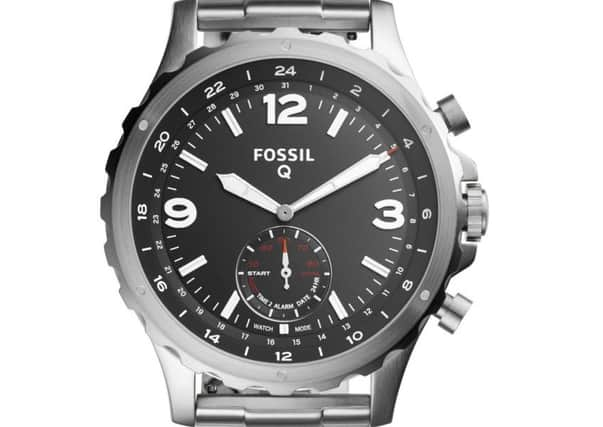Hybrid - the new type of watch that's smarter than it looks


It was Apple that kickstarted the market for “smart wearables”, with a watch that could pair with your phone and track your fitness regime and other vital signs, as well as letting you know about incoming messages and appointments without the tedium of having to take your phone out of your pocket.
Sony, LG and others followed, with watches using a modified version of Google’s Android phone operating system. But none has persuaded huge numbers of us to abandon our more traditional timepieces. Indeed, several manufacturers have abandoned the sector.
Advertisement
Hide AdAdvertisement
Hide AdThe Apple Watch, with prices from £329, is now in its third generation and this time offers the option of cellular, as well as wi-fi connectivity. That means it can be had from phone companies like EE on the same terms as a mobile handset - a low upfront cost and a then a payment per month for two years.
But despite its undoubted qualities - with a mobile contract it can do much of what your phone does, even if you don’t have it with you - it remains a niche product.
However, a new market has opened up for those who want to be seen with a piece of fashionable jewellery on their wrist, rather than a toy, yet who fancy a little of the functionality of the full-blown smartwatch.
Hybrids are much closer to normal watches in style and size, but are nevertheless capable of communicating with a phone and relaying information from it, and of monitoring your fitness and sleep patterns.
Advertisement
Hide AdAdvertisement
Hide AdThe disadvantage is that you can’t change the physical appearance of the watch face at will, or talk to someone from the convenience of your wrist; the advantage is that the battery needs no charging and will last for months instead of just 24 hours if you’re lucky.
Quite a few of the high street fashion jewellery brands offer hybrid watches now, and if you look closely enough, you will twig that despite cosmetic differences, many of them are exactly the same. That’s because several of the brands - Fossil, Skagen, Michael Kors, Emporio Armani and others - are made by the same company.
They provide an analogue face and a separate dial that measures your progress towards a stated fitness goal. The time is set automatically and the fingers change position and vibrate to let you know that a message awaits you on your phone. Prices start at around £160 and a wide choice of styles and straps is available.
Apple has also taken note of the fact that smartwatches, unlike phones, are not being seen as fashion items in their own right, and has partnered with the French luxury goods brand Hermes to produce a model whose appearance is as exotic as its £1,200 price tag. But this is a fully-functioning smartwatch, not a hybrid - as is the Android-based TAG Heuer Connected Modular 45, which starts at £1,450.
Advertisement
Hide AdAdvertisement
Hide AdTimex, meanwhile, has taken a different approach with its latest smart model. The Fairfield Contactless, which goes on sale this month at £159, is a conventional watch with a smart strap that has a chip like the one on your debit card. I means you can pay for small items with a tap of the wrist.
It’s encouraging that the market is being led now by demand, rather than technology for its own sake - but only time will tell if this will yet be the decade of the smartwatch.